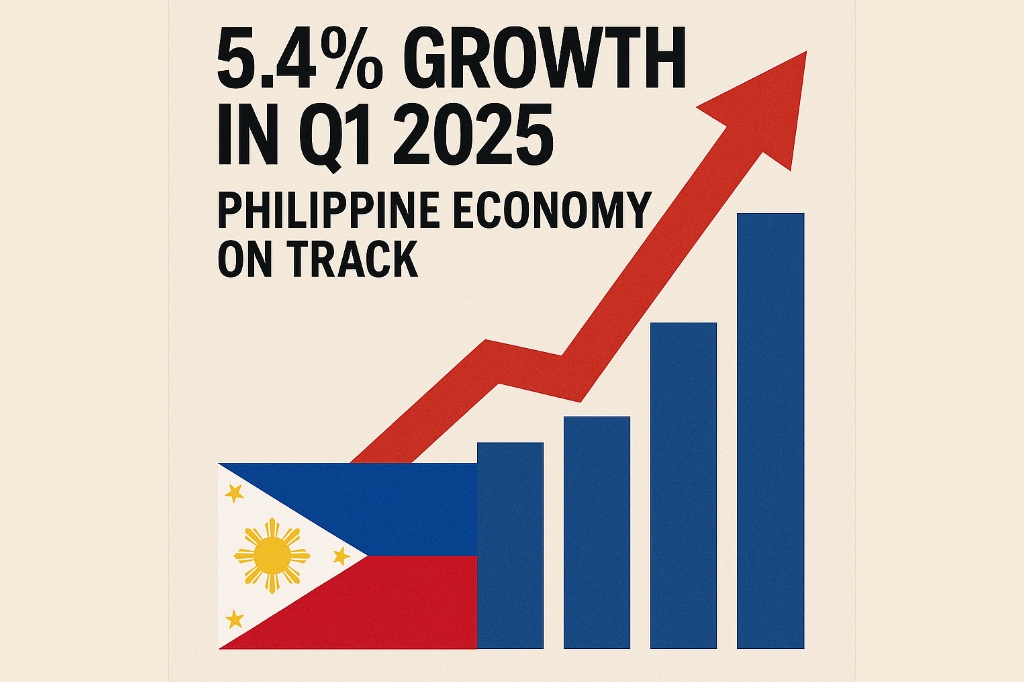5.4% growth in Q1 2025: Philippine economy on track, ceteris paribus
The Philippine economy started 2025 with a robust 5.4% year-on-year growth in the first quarter, a clear sign of resilience despite ongoing global uncertainties. While this marks a solid performance, it fell short of the 5.7% forecasted by analysts.
Nonetheless, the result reflects a broad-based recovery that continues to gain traction across key sectors, from retail to manufacturing. Despite external challenges, the Philippine economy has demonstrated its ability to maintain momentum, underpinned by strong domestic demand and strategic government interventions.
At the forefront of this growth were key sectors driving economic expansion.
Wholesale and retail trade, including repair of motor vehicles and motorcycles, registered a significant 6.4% increase. This growth indicates continued strong demand in the consumer market, a key pillar of the Philippine economy. The robust performance in this sector suggests that, despite global economic pressures, local consumption remains resilient.
Meanwhile, financial and insurance activities grew by 7.2%, reflecting increased economic activity and investment flows into the country. This is an encouraging sign of stability in the financial sector, which plays a crucial role in sustaining long-term growth.
Manufacturing, another critical sector, posted a 4.1% increase, solidifying the idea that the Philippines’ industrial base is recovering and adapting to the post-pandemic economy.
Together, these sectors are fueling growth and providing the foundation for continued economic progress.
In addition to these sectoral successes, government spending played a pivotal role in maintaining the growth trajectory. Public expenditure surged by 18.7%, the highest pace since 2020, driven largely by pre-election infrastructure investments.
The government’s focus on infrastructure, especially through its “Build, Better, More” program, has been a crucial driver of the economy, creating jobs and stimulating related industries such as construction and real estate. These investments also foster long-term growth by enhancing the country’s infrastructure, improving connectivity, and boosting productivity in the economy.
Furthermore, household consumption rose by 5.3%, up from the previous quarter’s 4.7%, signaling that Filipino consumers are feeling more confident. With inflation easing and income levels stabilizing, household spending is expected to continue being a major contributor to the economy in the months ahead.
Despite this positive performance, the Philippine economy did not quite meet the 5.7% growth forecast. The shortfall can be attributed to several external factors, such as the lingering effects of global trade uncertainties, including supply chain disruptions and the risk of rising tariffs, particularly from major trading partners like the U.S. These issues have the potential to slow down export growth and dampen investor sentiment. However, this does not detract from the fact that the underlying fundamentals of the economy remain strong. The government’s fiscal policies, designed to boost domestic spending and investments, are expected to continue supporting growth in the near term.
Inflation, a critical factor in sustaining growth, has shown a favorable decline. The latest figures indicate inflation has dropped to its lowest level in more than five years, falling to 1.4%. This easing of inflation is significant as it helps restore consumer purchasing power and encourages spending, which in turn supports broader economic growth. The Bangko Sentral ng Pilipinas may also opt for policy adjustments, such as lowering interest rates, to further stimulate economic activity, especially in light of declining inflation.
Looking at the broader picture, the Philippine economy’s 5.4% growth in the first quarter of 2025 fell just short of market expectations but remained broadly in line with its recovery trend. Key sectors showed continued expansion, government spending was robust, and inflation eased to multi-year lows—supporting a stable outlook. The focus now shifts to whether this momentum can be maintained amid external risks and policy adjustments in the months ahead.



0 Comment